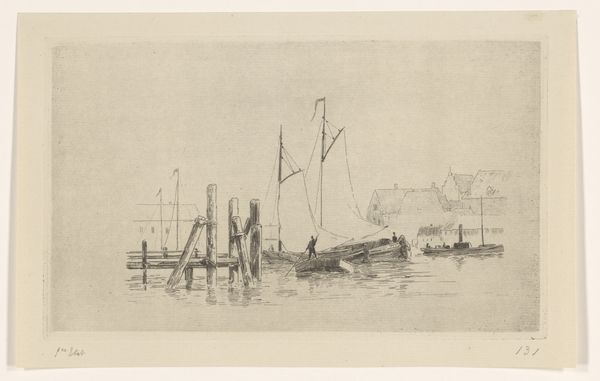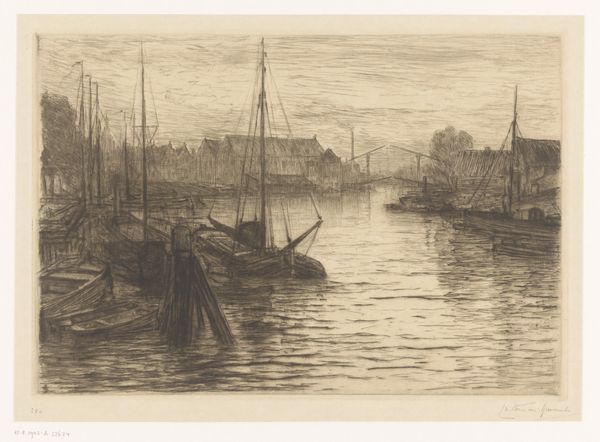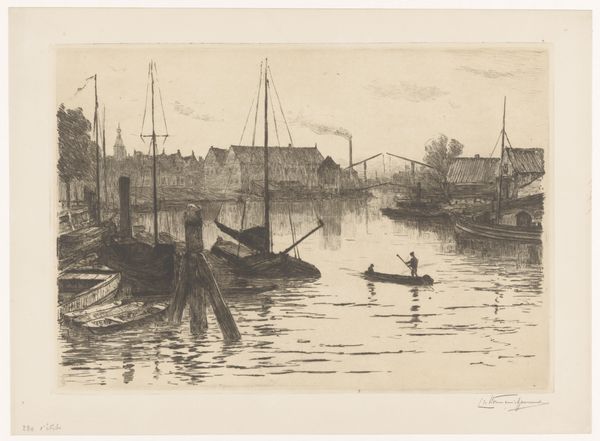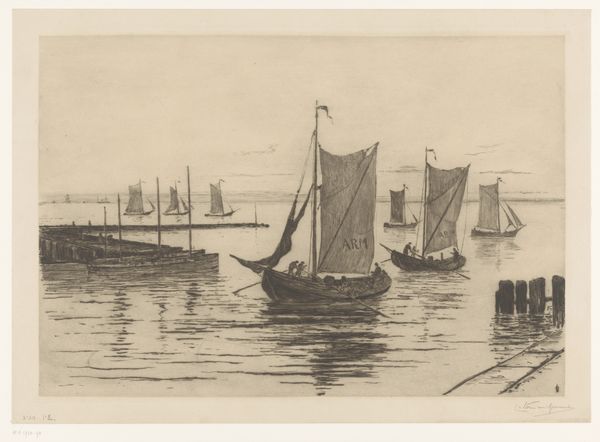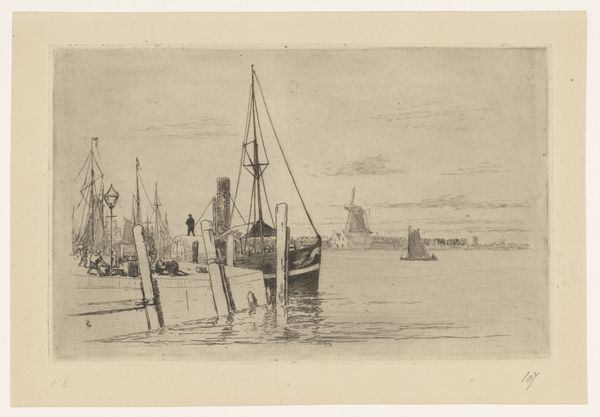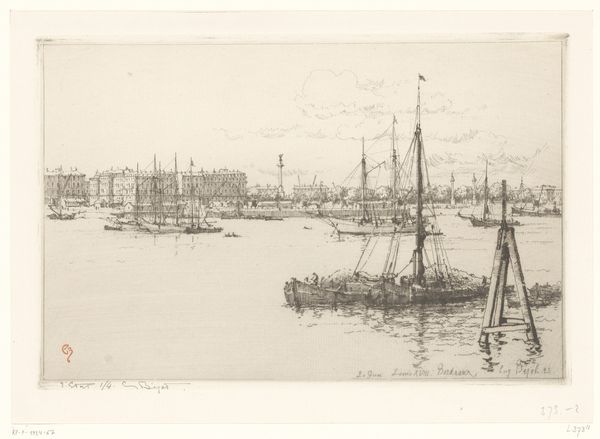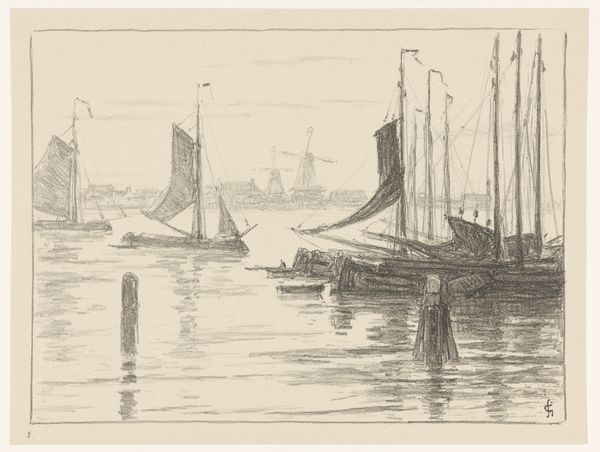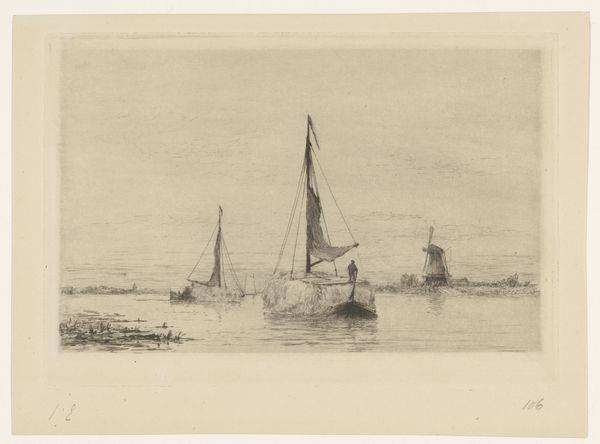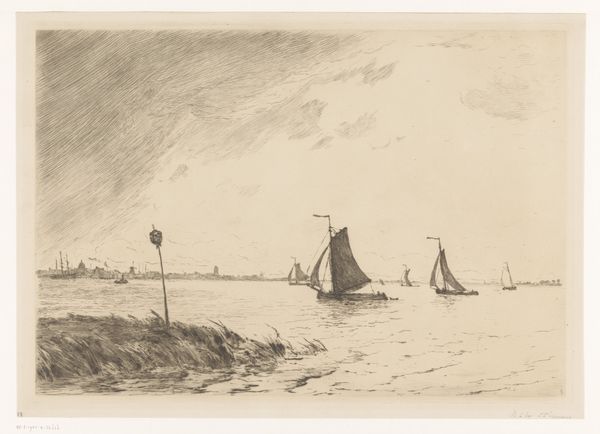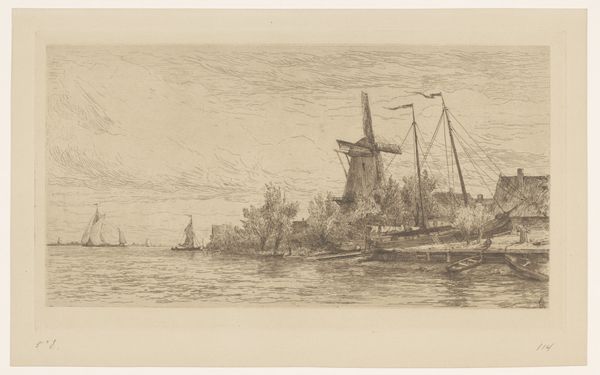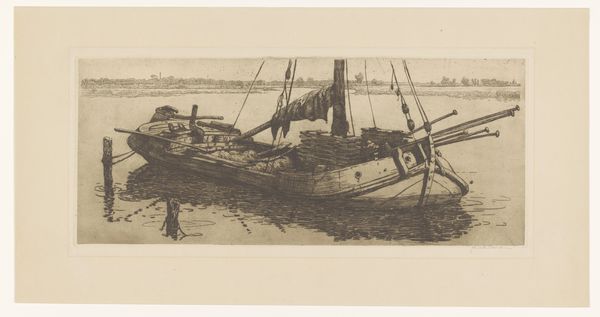
print, etching
# print
#
etching
#
landscape
#
etching
#
cityscape
#
realism
Dimensions: height 170 mm, width 280 mm
Copyright: Rijks Museum: Open Domain
Curator: This etching, created around 1880 by Carel Nicolaas Storm van 's-Gravesande, offers a serene view of the Haven in Dordrecht. The work uses a delicate realism to capture a peaceful moment in this Dutch city. Editor: Immediately, I’m drawn to the stillness. There’s something almost ghostly about the light, which softly diffuses over the water and the buildings in the distance. It feels like a memory. Curator: That sense of quietude aligns with the period’s interest in capturing fleeting moments. Storm van 's-Gravesande was greatly influenced by the French etchers of the time, aiming to capture an immediate impression of place. You can see it in the quick, precise lines that describe the wooden structures of the harbor. The etching as a medium helped democratize art, creating opportunities for the distribution of images like this, feeding a growing middle class audience interested in these types of landscapes. Editor: Absolutely, and the focus on labor is subtle but present. You can observe that figure at work on the boat. There is the implied labor, of course, the docks suggesting trade. The haze softens it. I wonder, who was this aimed at? Would working-class citizens have been able to access such an image of their everyday lives? Was this realism intended for the bourgeois drawing rooms? Curator: Those are critical questions. The image's consumption likely took place in a realm divorced from the lived experiences of Dordrecht's working class. It romanticized elements of their environment. But beyond the sociopolitical questions, this work demonstrates technical mastery, notably how van 's-Gravesande creates depth and atmosphere using only line and tone. The etching beautifully highlights the interplay of light and shadow, particularly across the water's surface. Editor: True, I appreciate the interplay of light. Looking at how he renders the reflections of the masts and the boats really brings to life a dynamic aspect of reality. There’s a deceptive simplicity here, making it almost easy to miss that beneath the surface is always social and political significance to capture the viewer's reflection. I think examining what this says about the era it came from is interesting too, even to a contemporary audience, as much as the work’s pure aesthetics. Curator: I agree completely. Exploring the historical context enriches our interpretation. Appreciating it is essential in allowing us to unpack assumptions. Editor: So, next time you stand on a harbor front, remember there is an image like this awaiting you from 1880, bridging the gap.
Comments
No comments
Be the first to comment and join the conversation on the ultimate creative platform.
